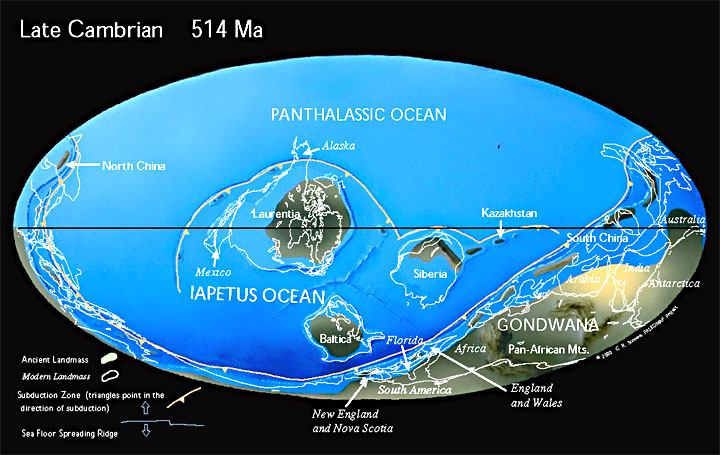The volcanoe that ate Australia
That was the actual title of the SMH story. I'm not quite sure how a volcano "eats" a continent, but it makes for a colourful simile.

Ok, so the story:
http://www.smh.com.au/news/science/the-volcano-that-ate-australia/2006/06/29/1151174333917.html
This is pretty cool this made it in the news actually. Its fairly widely known that this LIP (large igneous province) existed across the top end. It does equal a hell of a lot of lava.
A similar sized field (the Siberian Traps in, you guessed it, Siberia) poured out an equal amount at about 252Myr (million years ago) - about the same time as the Permo-Triassic mass extinction. This was THE largest extinction ever, with 96% of all life going extinct. Life barely made it through this one. It probably wasn't just the volcanoes, though, it seems that meteorites+volcanoes are the loosing combination.
When the dinosaurs went extinct 65Myr ago, there was also a massive amount of volcanism going on in the Deccan Traps, in India. Then a meteorite hit what is now Mexico. The rest is Hollywood history. Of course, everyone (and I use that term loosely) knows that a meteorite killed the dinosaurs, not everyone (?!) knows that the volcanism going on at the time probably weakened the biosphere first.
So what effect could the "Darwin" Traps have had? Well, it depends on their age. Life was experimenting fairly energetically at the time (how about another leg here? No? Oh well, lets hope those trilobites turn out). So there was a lot of dying going on. An extinction due to volcanism at 500-515Ma is plausible, but how plausible depends on the exact ages of the volcanics, which I haven't seen. This is probably the only thing worth bitching about in the article. Would it kill em to say where this work was published? Other than that, its pretty accurate.
How bad things got would also depend on the world at the time. Here's what the world looked like in the Cambrian.

Australia of course is shunted off to the side. But massive volcanism in Australia would have affected a lot of the shallow ocean, so again, its intriging....
I'm with-holding judgement till I see the paper. I'll be back.

Ok, so the story:
http://www.smh.com.au/news/science/the-volcano-that-ate-australia/2006/06/29/1151174333917.html
This is pretty cool this made it in the news actually. Its fairly widely known that this LIP (large igneous province) existed across the top end. It does equal a hell of a lot of lava.
A similar sized field (the Siberian Traps in, you guessed it, Siberia) poured out an equal amount at about 252Myr (million years ago) - about the same time as the Permo-Triassic mass extinction. This was THE largest extinction ever, with 96% of all life going extinct. Life barely made it through this one. It probably wasn't just the volcanoes, though, it seems that meteorites+volcanoes are the loosing combination.
When the dinosaurs went extinct 65Myr ago, there was also a massive amount of volcanism going on in the Deccan Traps, in India. Then a meteorite hit what is now Mexico. The rest is Hollywood history. Of course, everyone (and I use that term loosely) knows that a meteorite killed the dinosaurs, not everyone (?!) knows that the volcanism going on at the time probably weakened the biosphere first.
So what effect could the "Darwin" Traps have had? Well, it depends on their age. Life was experimenting fairly energetically at the time (how about another leg here? No? Oh well, lets hope those trilobites turn out). So there was a lot of dying going on. An extinction due to volcanism at 500-515Ma is plausible, but how plausible depends on the exact ages of the volcanics, which I haven't seen. This is probably the only thing worth bitching about in the article. Would it kill em to say where this work was published? Other than that, its pretty accurate.
How bad things got would also depend on the world at the time. Here's what the world looked like in the Cambrian.

Australia of course is shunted off to the side. But massive volcanism in Australia would have affected a lot of the shallow ocean, so again, its intriging....
I'm with-holding judgement till I see the paper. I'll be back.




